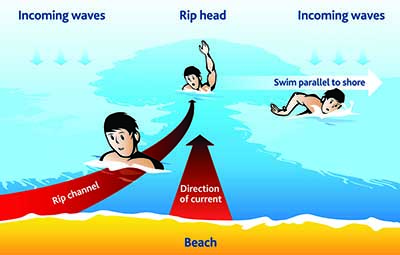What are Rip Currents?

Rip currents
In the UK, the majority of RNLI Lifeguard incidents involve rip currents. They are a major cause of accidental drowning on beaches all across the world.
Demystifying rips
Rips are strong currents running out to sea, which can quickly drag people and debris away from the shallows of the shoreline and out to deeper water.
They tend to flow at 1–2mph but can reach 4–5mph, which is faster than an Olympic swimmer.

Rips are especially powerful in larger surf, but never underestimate the power of any water. They are also found around river mouths, estuaries and man-made structures like piers and groynes.
How to spot and avoid a rip current
Rip currents can be difficult to spot, but are sometimes identified by a channel of churning, choppy water on the sea’s surface.
Even the most experienced beachgoers can be caught out by rips, so don’t be afraid to ask lifeguards for advice. They will show you how you can identify and avoid rips.
The best way to avoid rips is to choose a lifeguarded beach and always swim between the red and yellow flags, which have been marked based on where is safer to swim in the current conditions. This also helps you to be spotted more easily, should something go wrong.












